With over a decade of experience in website promotion and SEO (since 2007), I've encountered the issue of link farm sites numerous times.
And it’s safe to say that about 90% of link-building agencies offer links from these link farm sites. In this guide, I'll outline how to differentiate between these dubious platforms and genuine business sites.
Knowing how to spot the difference can save you significant amounts of money on link-building services.
What Are Link Farm Sites?
Link farms are groups of websites created solely for SEO purposes, aimed at manipulating search engine rankings. They're often included in monthly packages by link-building agencies.
How to Distinguish Link Farm Sites From Genuine Websites of Real Businesses?
Unfortunately, link farm sites are prevalent in website promotion efforts, particularly within local SEO. Many clients investing in SEO services end up disappointed with lackluster results, viewing SEO as ineffective.
For instance, we recently had a client who spent $50K annually on links but didn't see any better search engine visibility, and in some cases, a decline in SEO performance.
In the image below (captured from Ahrefs), you can observe the links that their link-building contractor was generating for them.
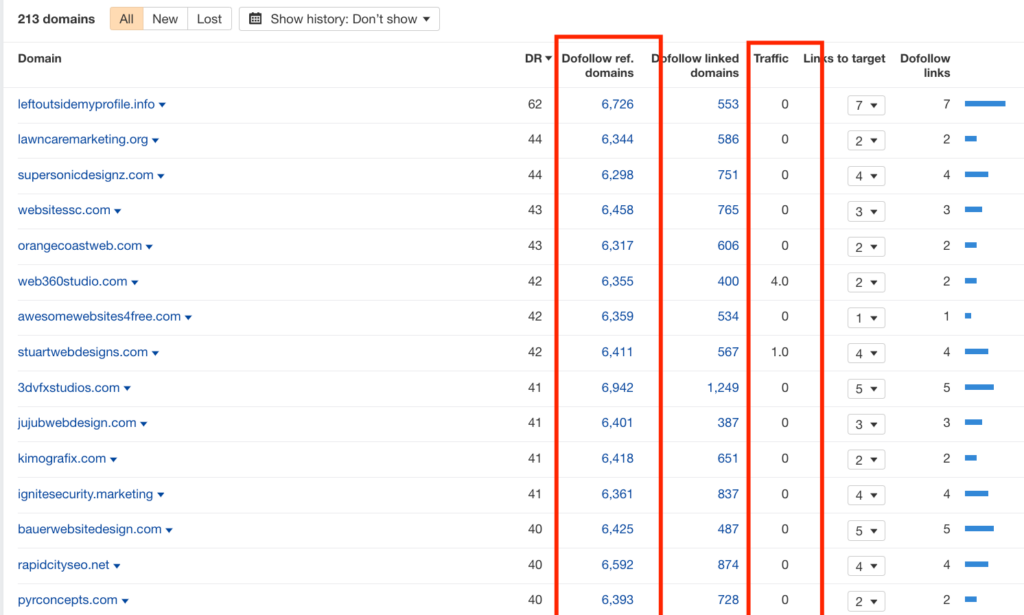
We can easily spot all the signs of an artificial blog network: they have similar numbers of referring domains, similar Domain Ratings (DR), and zero traffic. However, this is just the basic scenario.
Identifying modern link farm sites can be tricky for those not well-versed in the nuances. Even online tools designed to spot them can be unreliable.
Take, for instance, Matthew Woodward's tool. It hosts a blacklist of sites known for selling links.
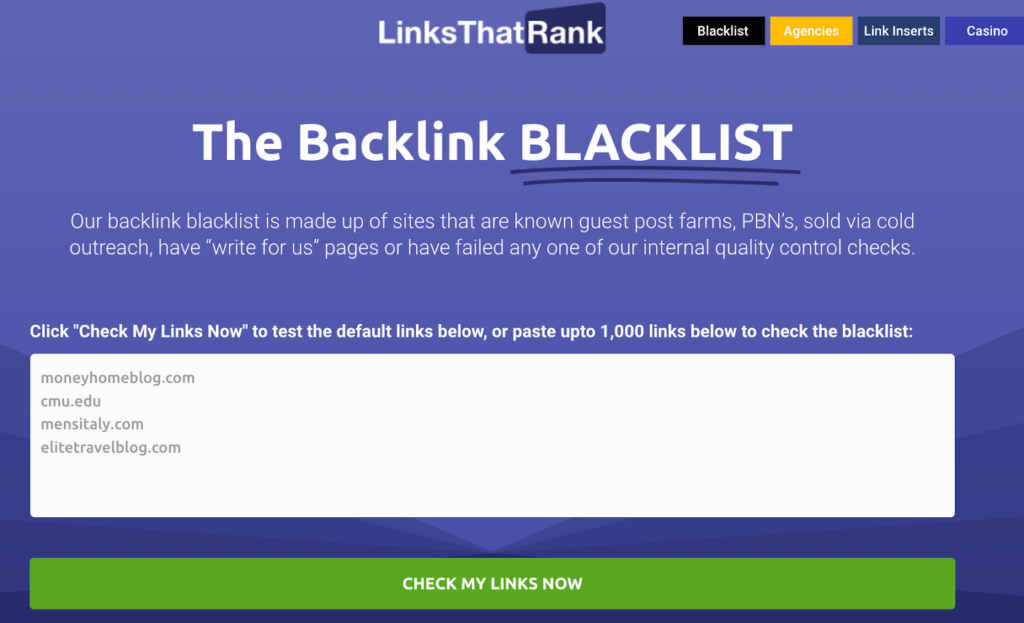
I decided to review one of the monthly reports that the client had ordered from a well-known link-building service before engaging with us.
The client's report included 20 sites, and the package of links from this service costs $5000 per month, translating to $250 per link.
Upon checking the sites provided in the report, none were found on the blacklist.
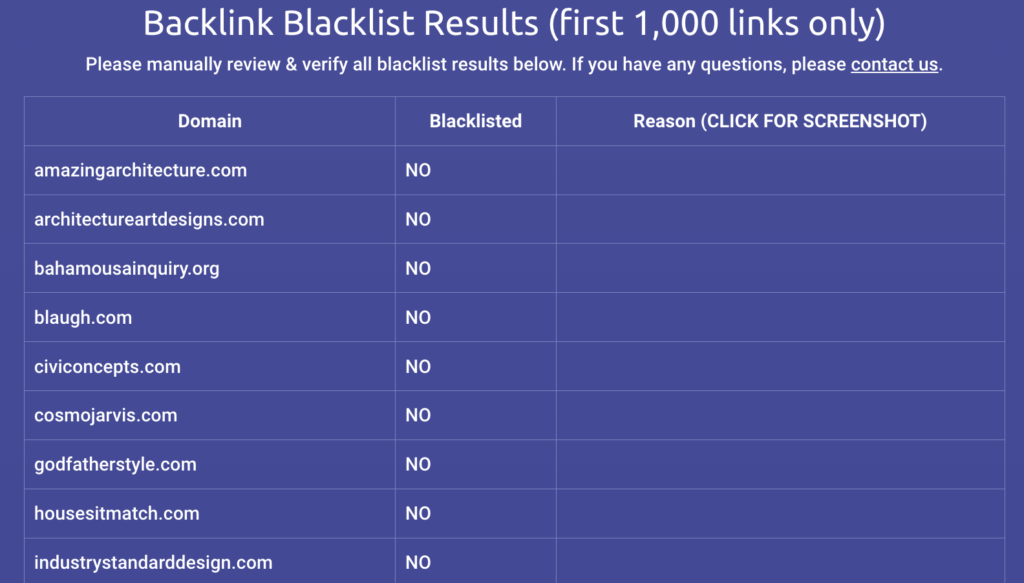
But, it turns out all these websites are actually just link farms.
Also, 3 out of the 20 sites are no longer accessible, even though it's been only 6 months since links from these sites were posted to the client's site. This usually happens because link farm owners stop renewing their domain if they get banned and deindexed by Google.
Let's delve deeper into one of the sites, magazinesvalley.com.

Here's what the site looks like:
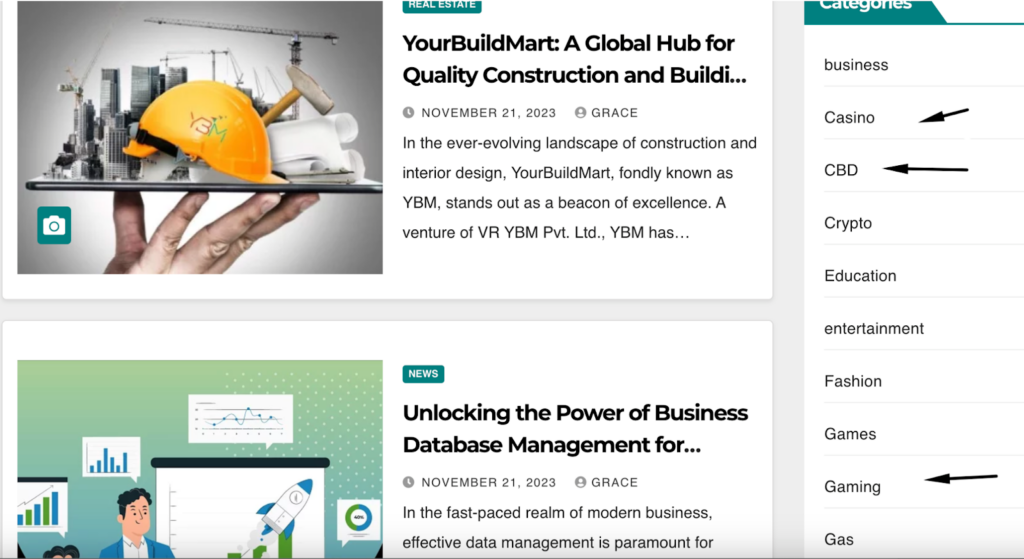
The site operates as a link-selling platform. These sites typically feature numerous broad categories and sections specifically designed for link sales.
Generalized categories exist to accommodate advertising articles on various topics.

An example of a promotional article:

How to quickly determine that you are dealing with a link farm site?
Navigate to the "Outgoing Anchors" report in Ahrefs and analyze the anchor texts of the links.
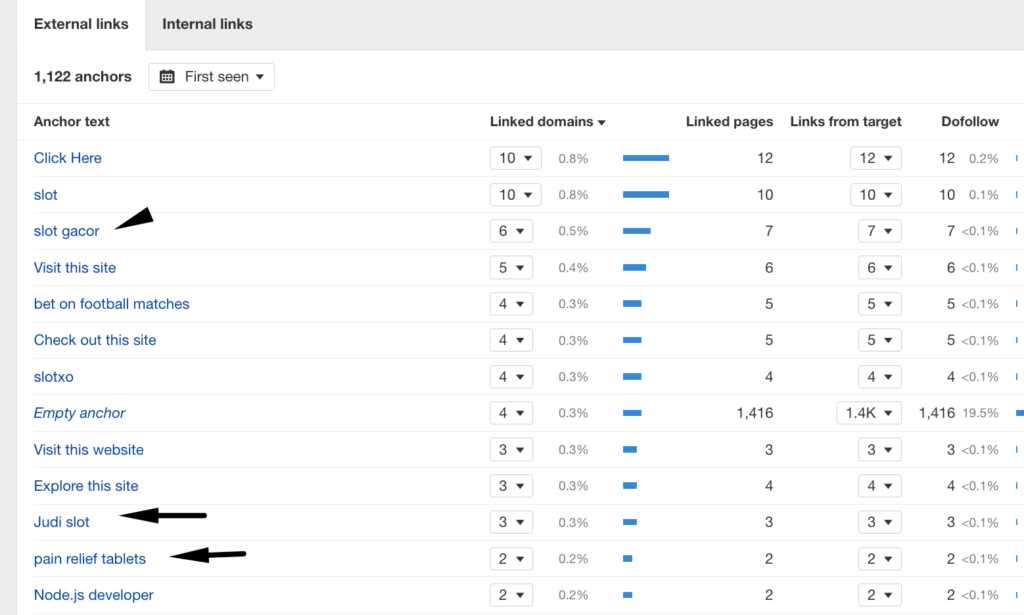
As you can see in the report, links span various niches, including gray and illegal ones, which means that the site accepts and publishes links across all niches without moderation.
If you don’t have an Ahrefs subscription or access to the outbound links report (which may be unavailable due to webmasters blocking the Ahrefs bot to conceal outbound links), you can choose an alternative way by using Google and the site:magazinesvalley.com operator.
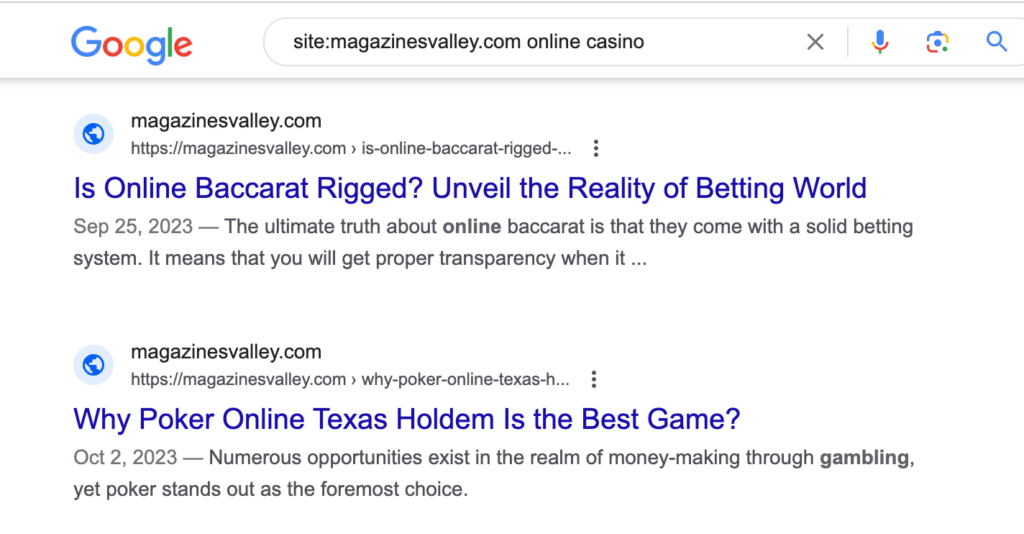
If you come across search engine result pages with links leading to gray and illegal niches, chances are you're dealing with a link farm.
Why Do People Still Buy Links From Link Farm Sites These Days?
There are several reasons:
- Difficulty in obtaining links organically. In certain niches like legal services, acquiring links from legitimate sites can be exceptionally challenging.
- High demand for links in competitive niches. Consider the software development outsourcing niche (we have a few cases in our portfolio), where numerous companies compete for SERP visibility.
In fact, even with quality content, ranking high on Google demands more. Consequently, competition often centers around link budgets.
- Clients' belief in the "more links, the better" principle. Many clients opt for quantity over quality, preferring hundreds or even thousands of cheaper links instead of a few high-quality ones.
- Lack of understanding about link quality. Some clients fail to grasp why they should pay $500 for a link from an article on a DR 93 site when another agency offers a link from a DR 94 forum for only $5.
If you're facing similar challenges, I suggest reading my article on forum links, where I elaborate on the distinction between in-content and forum backlinks.
Our manager informed the client about the link costs: $1,750 for a package of 5 links (which amounts to $350 per link), and $6,000 for 20 links (which comes out to $300 per link). This made the client worry that the expensive cost per link could be a financial burden.
In the example below, you'll see a screenshot from Upwork.
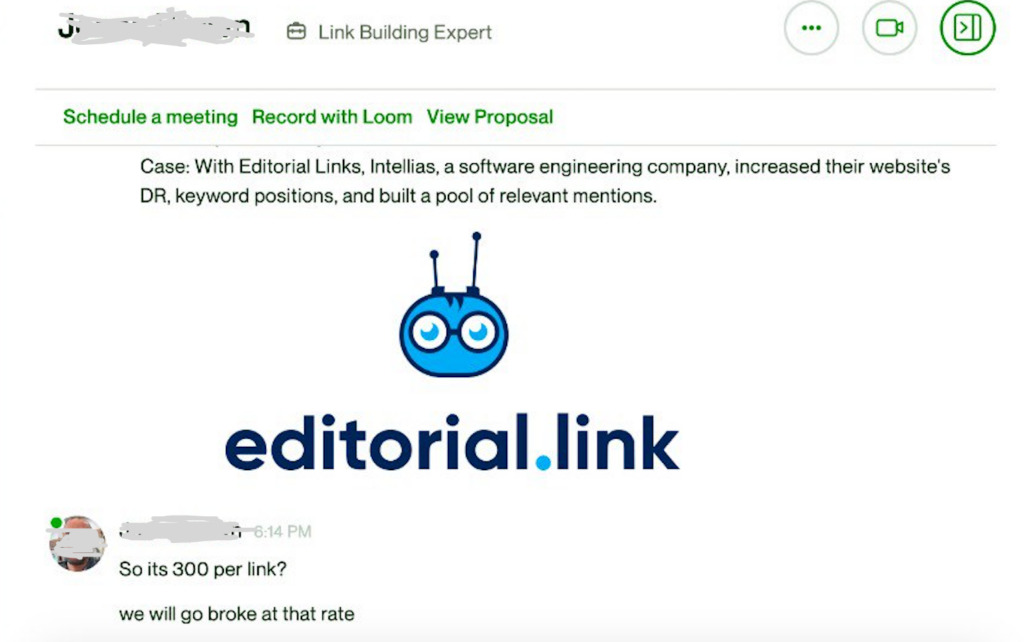
Many clients think having more links means better results. It's like buying two beers at the supermarket and getting a third one free during a promotion.
People believe that 10 links are better than one, and 1000 links are better than 100. As long as links are an important ranking factor, sellers of link farm sites will always find clients. Some even manage thousands of orders on platforms like Fiverr.

Does the Number of Backinks Matter?
Yes, more links can be beneficial, but only if they are high-quality and relevant. However, acquiring such links quickly is not easy.
🤔 For example, we always tell our clients straight away that getting a link from the HubSpot blog can take anywhere between 2 to 3 months. This is because there are real people handling these tasks. They follow a content schedule, review every article submitted, and sometimes they go on vacation or have holidays.
Therefore, the cost of acquiring such links cannot be low. Earning them involves building relationships and implementing quality content marketing strategies.
If you're promised numerous links quickly, they're likely obtained through automated processes like forum commenting or using software like Hrumer or GSA. Alternatively, they might be placed on private blog networks in an automated or semi-automated manner.
Links from such sites can not only fail to yield positive results but may also have negative implications.
🔍 By the way, in my article on the importance of backlink quantity for ranking, I explained why having numerous links isn't necessary if they're of high quality.
- Link farms artificially inflate domain authority metrics.
Despite Google using the PageRank algorithm to assess domain and content authority, it stopped displaying this information publicly in 2016.
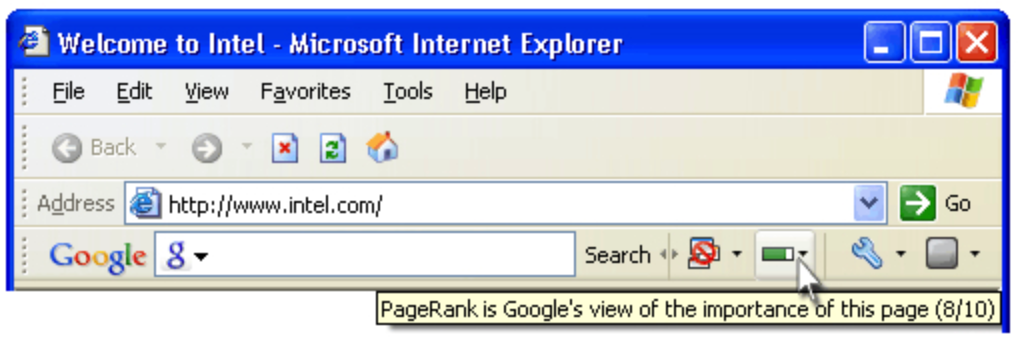
In the past, Google assigned each webpage a PageRank score ranging from 0 to 10, indicating its link strength. However, SEO practitioners often exploited this score to manipulate search rankings, leading Google to remove it from public view.
PageRank was subsequently replaced by SEO metrics from platforms like Ahrefs, Moz, Majestic, and Semrush. These metrics are now widely used to assess the authority of a website. However, they differ from Google's understanding of site authority.
Today, many SEO experts and link builders rely on metrics like Moz's Domain Authority (DA), Ahrefs' Domain Rating (DR), and Majestic's Trust Flow (TF) to evaluate site quality. They often provide clients with reports detailing these metrics for each link.
Link sellers charge higher prices for links from sites with higher metrics. However, you should know that these SEO metrics can be manipulated. For instance, on platforms like Fiverr, there are numerous offers to artificially inflate domain authority metrics.
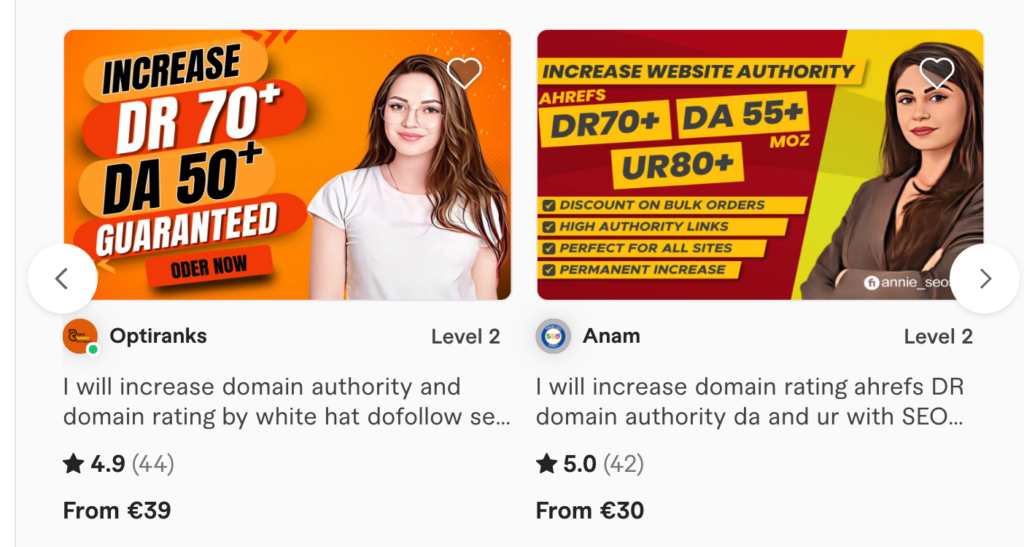
As an experiment in June 2023, I utilized a test domain and engaged a Fiverr service offering Ahrefs DR boosting. Within two weeks, the DR of the test domain surged from 0 to 70, thanks to 15 low-quality links.
Eight months later, despite some links being removed, the domain's DR remains notably high at 53.
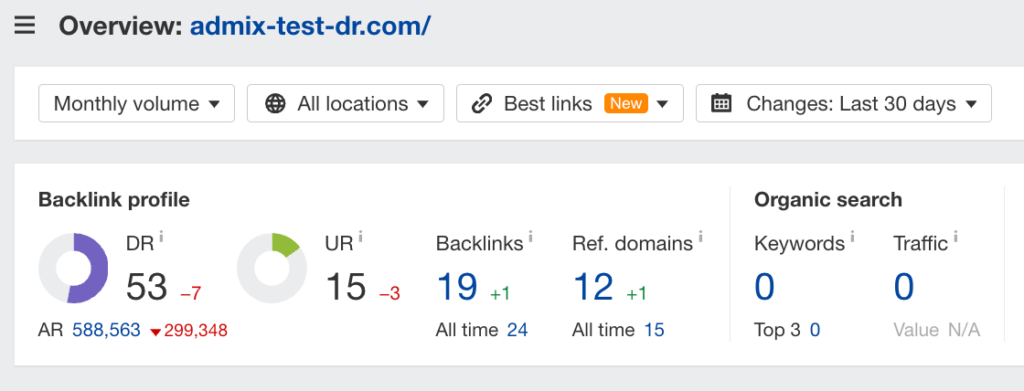
So, when you buy links from sites with high domain authority according to Ahrefs or Moz, it's possible that this number was artificially boosted, and Google might not see it as credible.
Since domain authority can be faked easily, what should you look for in a site?
Some SEO experts say site traffic is a good indicator, but it's not always clear. For example, mitmunk.com gets 10K visits per month according to Ahrefs.

The site receives a considerable amount of traffic. However, when we examine the quality by analyzing the keywords the site ranks for, we find that they mostly consist of the names of different people.
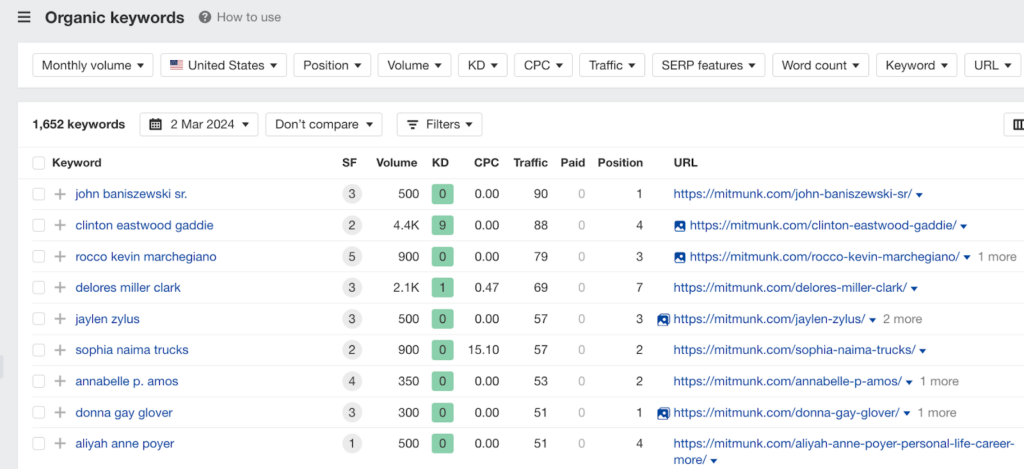
On link-selling platforms, they often publish articles about popular TV shows, movies, Instagram models, anime, and other fun topics to attract search traffic.
This traffic is non-commercial and very easy to get, and the mere presence of traffic does not make the referring site higher quality.
Also, another popular method for link farm website.
When evaluating website traffic, pay attention to the keywords through which it receives it. Often, you can see similar keywords, which, for example, Ahrefs identifies as keywords with quite substantial traffic, for instance:
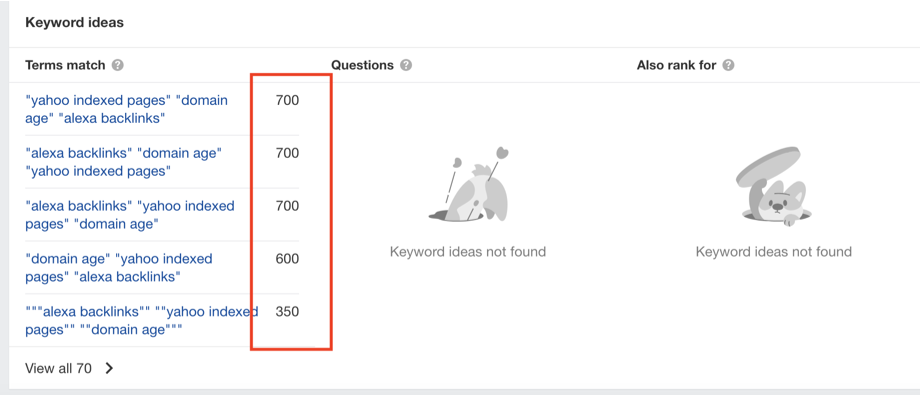
In reality, such queries won't bring traffic because the frequency of such queries is artificially inflated. However, typical link farms may actively use such keywords to inflate their metrics in Ahrefs, selling their links.
For example, a website like ebayforcharity.org, even though it gets only 2K visitors a month, is considered more trustworthy than mitmunk.com, which gets 10K visitors, because ebayforcharity.org represents a real company.

Let's examine the backlinks of ebayforcharity.org. You'll notice that the site has links from reputable websites like eBay.com, pcmag.com, nationbuilder.com, and others.

And here's what mitmunk.com's link profile looks like:
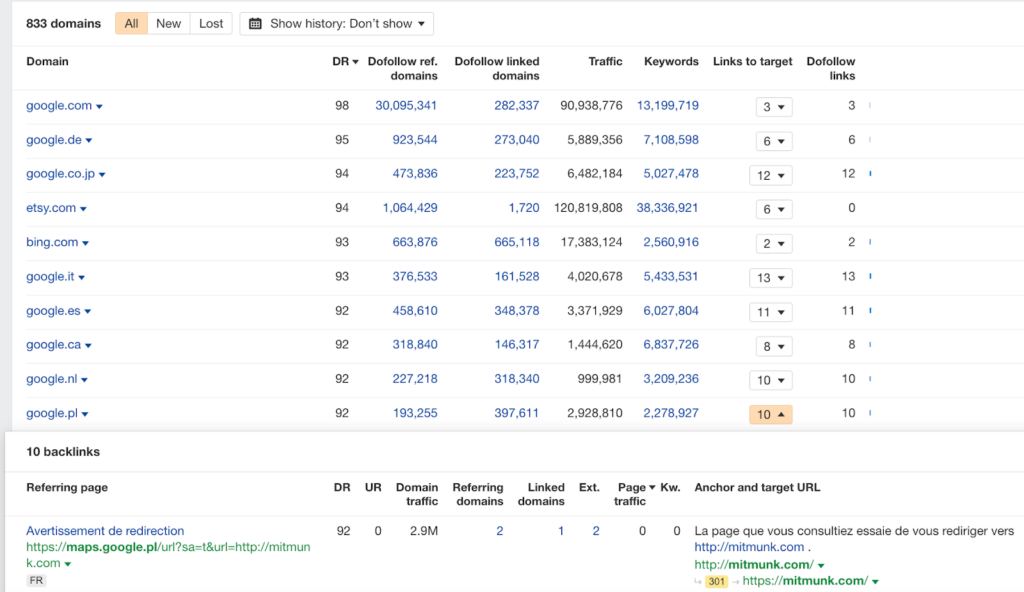
There are numerous Google redirects in the links, which should raise a red flag. It's important to note that these redirects are not naturally created by Google to direct traffic to the site.
Instead, they have artificially placed redirects originating from 185 regional domains of Google. Their purpose is to inflate the Domain Authority (DA) and Domain Rating (DR) metrics in SEO tools.
These redirects may also include links from the websites of educational institutions.

If you know which links are organic and which are not, you can easily determine the naturalness of a site's link profile. For ebayforcharity.org, the links seem natural, but for mitmunk.com, they seem fake.
Real links from authoritative sites are hard for link farms to copy. It's not just about metrics like DR or DA; it's about the type, quality, and number of links.
Links from authoritative sites define a site's strength as a link source, not just its traffic volume or DR and DA metrics.
🤝 So, remember: the harder it is to get a link, the better it usually works. Trusted sites are careful about the links they share.
Another way to judge a site's quality is by comparing its incoming and outgoing links.
For example, magazinesvalley.com only has 74 referring domains, according to Ahrefs.

Though it has 800+ linked domains:

This suggests that the site gives out more links than it receives, which means it's not often linked to by other sites and should be avoided.
Conversely, if a site has many inbound links, it's crucial to check if these links are natural. For example, having 15,000 referring domains sounds impressive, but if these links are placed automatically rather than naturally, this could actually be a red flag.

If you see zero outgoing links in the report, it might be because the webmasters blocked SEO tool crawlers. They do this to stop you from comparing the number of outgoing links with the number of linked domains.

With ChatGPT, generating lots of content became easier, giving a boost to the link farm industry. Today's link farm sites try to look real, but their link profiles give them away.
Also, last news about using AI content for websites, unrelenting.
Why should one beware of link farm sites built on AI-generated content? As we can see, recently, Google has started actively combating websites that utilize AI-generated content.
Specifically, Google has deindexed such sites. A few recent instances:
Ian Nuttall posted a whole list of websites that fell under Google's update on his Twitter:
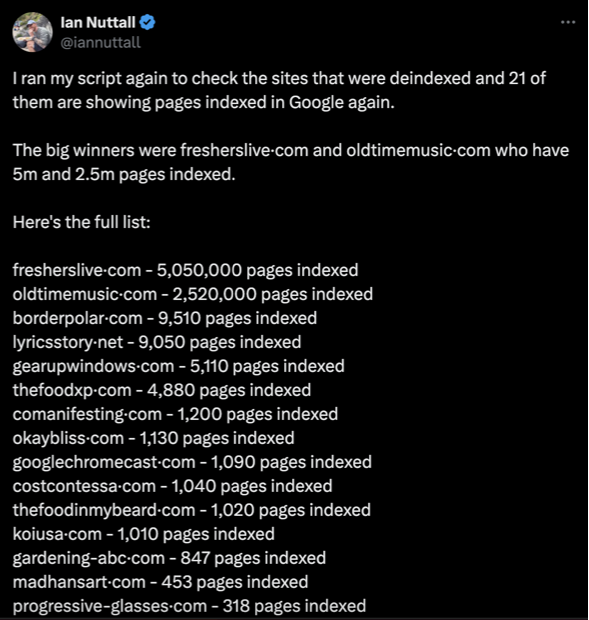
Another SEO influencer Charles Floate published an entire post about how Google was imposing sanctions on websites built on AI-generated content.
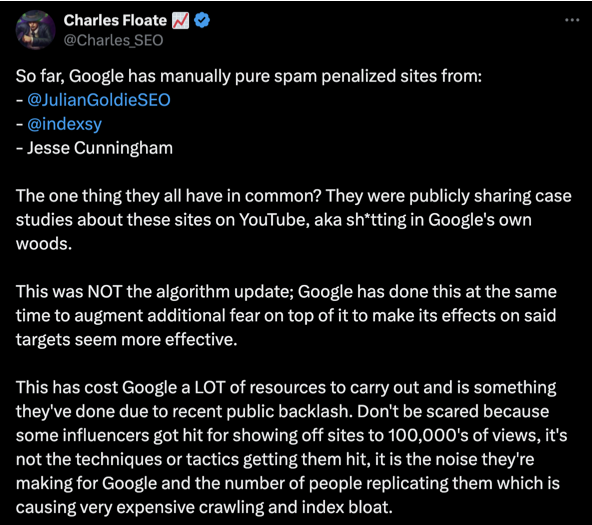
This indicates that by placing links on link farm sites, not only are you unlikely to derive any value from such links, but you will also waste money, as, at any moment, Google can impose sanctions on these sites and render such links toxic for your website.
If, in the link profile of your researched site, you see a lot of high-DR sites that anyone can post on, be cautious - it's likely a link farm.
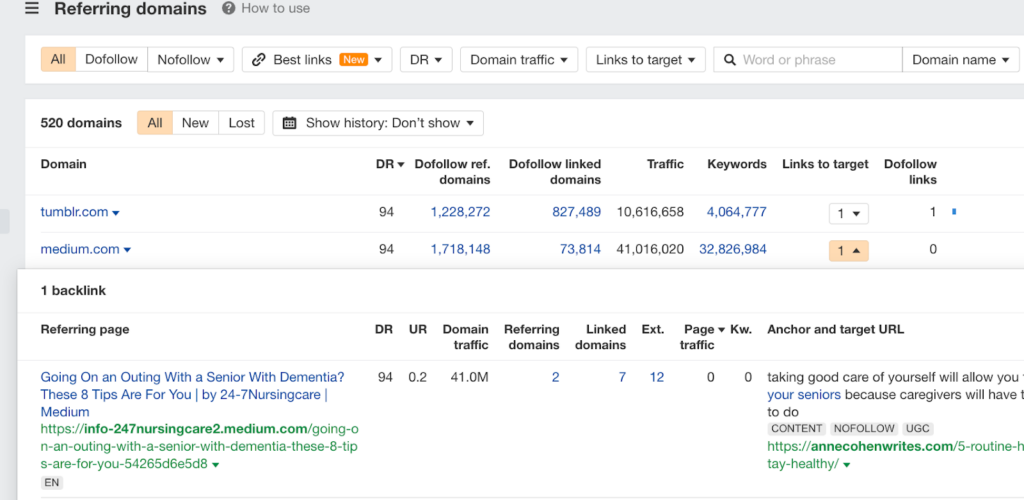
Modern link farm looks like:
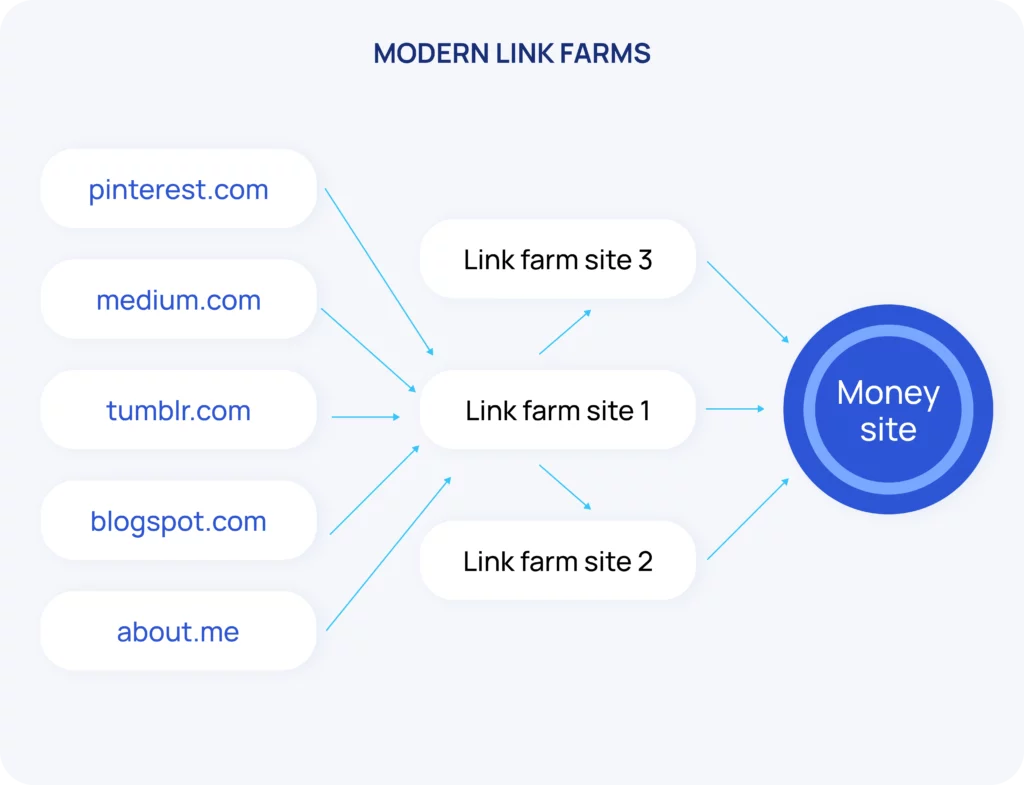
Should I Use Links From Link Farm Sites?
Using links from link farms may give short-term benefits in some cases, but it's not good for long-term success. People often use these links when it's hard to get them naturally, like in affiliate marketing.
But if you want your business to last, it's better not to rely on these links. Sometimes, they won't help much, and sometimes, they might even hurt your site's rankings.
In our article with 33 advanced B2B link-building tactics, we talked about better ways to get links. Try those methods instead. Connect with others in your industry and join events to get niche-relevant links.
Frequently Asked Questions About Link Farming
What is link farming?
Link farming is when a bunch of websites link to each other in a closed network to try and trick search engines into boosting rankings. The problem is that these links don’t offer any real value - they’re just there to trick the system.
How do I identify a link farm?
It’s pretty easy once you know what to look for. Check if a site has tons of links pointing to unrelated pages, poorly written or irrelevant content, and no real audience interaction. If it feels like the site exists just for links, it’s likely a link farm.
You can also use our Link Type Classifier to identify link farm websites.
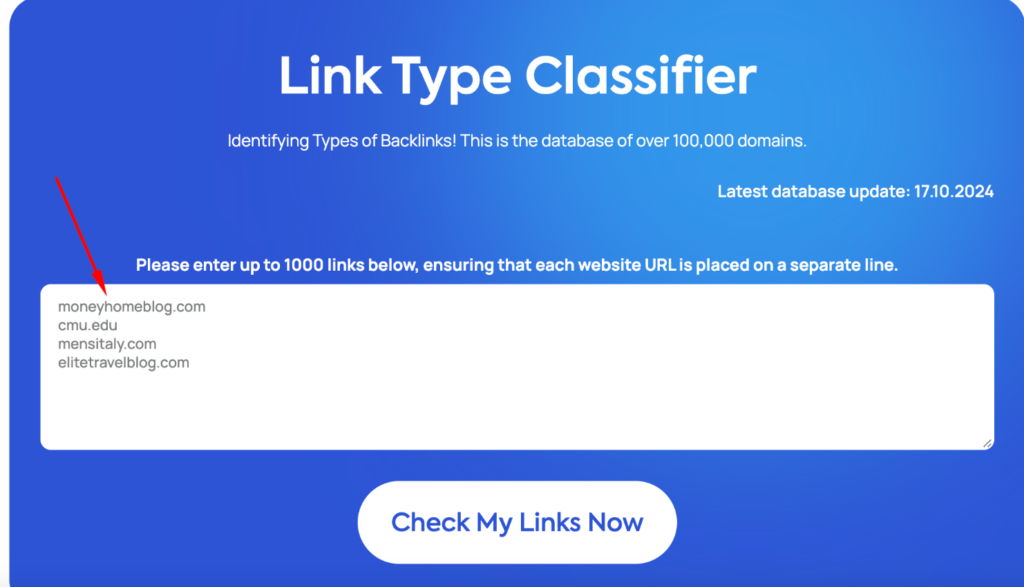
What is link farming spam?
Link farming spam happens when low-quality links are mass-produced using link farms to manipulate search rankings. This violates Google’s guidelines and can land you a penalty.
Is link farming good for SEO?
Nope. Not at all. Link farming can tank your SEO instead of boosting it. Google is smart enough to catch these shady tactics, and when they do, your site’s rankings can take a serious hit - or worse, get removed entirely. Therefore, focus on earning quality links instead.
Final Thoughts
Now that you know what a link farm site looks like, don't buy packages promising lots of links each month.
Editorial.Link’s link building solutions focus exclusively on high-quality websites. That’s why we work on a post-payment basis, as we can't guarantee 100% that our clients will obtain a link from a specific site. This is because these links are not bought, and an authoritative site may refuse to place a link to the client's site for various reasons.
Choosing corporate blogs of businesses means selecting those that care about good content and credible links. This leads to other reputable sites naturally linking to them.
Links from link farm sites may seem cheap, but they won't give you lasting benefits.
In contrast, getting editorial links from real business websites is a smart long-term move.
These links become stronger over time.

